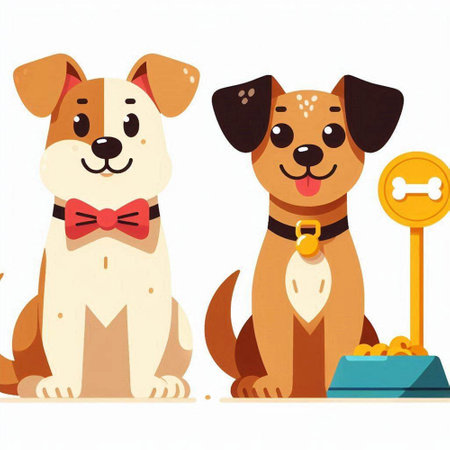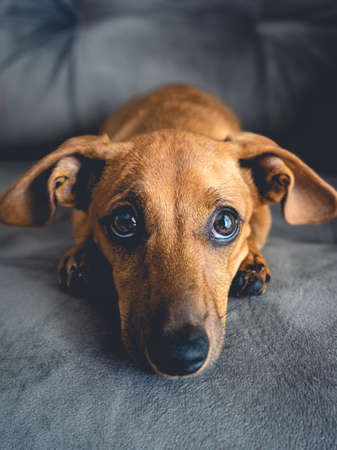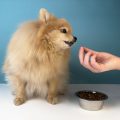Understanding the Needs of Small and Large Breeds
When it comes to choosing the right pet bed, understanding the unique needs of small and large dog breeds is crucial. The physical and behavioral differences between these groups greatly influence what makes a bed comfortable and supportive for them. Small breeds like Chihuahuas or Dachshunds tend to seek warmth and security, often curling up tightly. They’re more sensitive to temperature changes and may prefer plush, enclosed beds that help them feel safe. On the other hand, large breeds such as Labradors or Great Danes require spacious, supportive surfaces. Their joints carry more weight, making orthopedic support essential to prevent discomfort or long-term health issues. Behaviorally, larger dogs are less likely to burrow but need room to stretch out fully. Recognizing these distinctions is the first step in selecting a bed that truly caters to your dog’s well-being.
2. Size and Shape Matters: Choosing the Right Fit
When it comes to pet beds, size and shape are more than just aesthetic choices—they’re essential for your dog’s health and comfort. American homes come in all shapes and sizes, just like our dogs, so finding a bed that fits both your pet and your living space is key. Small breeds often curl up into tight balls or nestle in cozy corners, while large breeds tend to sprawl out or stretch their legs. This means that the right bed for a Chihuahua won’t suit a Great Dane, not only because of their size difference but also due to their unique sleeping habits.
Breed-Specific Sleeping Styles
| Breed Size | Common Sleeping Style | Recommended Bed Shape |
|---|---|---|
| Small Breeds (e.g., Yorkie, Dachshund) | Curling up, nesting | Round, bolster, cave-style beds |
| Large Breeds (e.g., Golden Retriever, Mastiff) | Sprawling, side-sleeping | Rectangular, mattress-style beds |
Considering Your Home’s Space
Space is another factor many American pet parents consider. In apartments or smaller homes, compact beds designed for small breeds can easily fit under a desk or in a corner. For those with bigger living rooms or backyards, there’s more flexibility to accommodate oversized beds for large dogs. The goal is to offer your pet enough room to rest comfortably without overcrowding your own living area.
Takeaway: Match Bed Size With Both Dog and Living Area
The best bed is one that matches your dog’s size and natural sleeping style, while also fitting seamlessly into your home. Taking time to measure your pet when they’re fully stretched out—and being realistic about where the bed will go—can make all the difference for restful sleep and a happy household.

3. Material and Durability Considerations
When choosing a pet bed for your furry friend, the material and durability are crucial factors that vary significantly between small and large breeds. Small dogs, often full of energy and curiosity, might dig or scratch at their beds, but generally, their lighter weight puts less strain on the fabric and cushioning. This means that beds made from soft plush materials or lightweight cotton blends can be both cozy and long-lasting for small breeds. On the other hand, large breeds demand tougher materials due to their greater body mass and strength. Beds for bigger dogs need heavy-duty fabrics like canvas, reinforced polyester, or ballistic nylon to withstand daily use without tearing or flattening.
Insulation Needs for Different Breeds
Insulation is another key aspect when comparing pet beds for different sizes. Small breeds tend to lose body heat faster and often seek out warm, insulated spaces. Beds with thick padding, memory foam, or faux fur covers help retain warmth and provide a sense of security. In contrast, large breeds generate more body heat and may prefer beds with breathable fabrics and cooling gel inserts to avoid overheating, especially in warmer climates.
Cleaning and Maintenance
The ease of cleaning is a practical concern for all dog owners, but it takes on added importance based on your dogs habits and size. Small breed beds are typically easier to fit into standard washing machines and dry quickly due to their compact size. For larger breeds, removable, machine-washable covers are a must because the entire bed may be too big for regular laundry appliances. Durable materials that resist stains and odors are also essential for maintaining freshness in homes with active or outdoor-loving dogs.
Matching Materials to Lifestyle
Ultimately, selecting the right material is about matching your dogs lifestyle. If you have a high-energy terrier who loves to nest, choose a plush yet sturdy fabric that can endure scratching. For a laid-back Great Dane, prioritize thick orthopedic foam covered with durable upholstery to support their joints while surviving years of use. By considering these differences in material preferences and durability needs, youll ensure your pet’s comfort while making cleanup simple for yourself.
Support and Cushioning: Orthopedic vs. Plush
When it comes to choosing the right pet bed, one of the biggest differences between small and large breeds is the level and type of support needed. Orthopedic beds are often recommended for large breeds due to their size, weight, and predisposition to joint issues like hip dysplasia or arthritis. In contrast, many small breed owners prioritize plush comfort, since their pets generally have fewer joint problems and enjoy curling up in soft, cozy spaces.
Why Orthopedic Beds Matter for Large Breeds
Large dogs like Labradors, German Shepherds, and Golden Retrievers can weigh upwards of 70 pounds. With this extra weight comes more pressure on joints and bones. Over time, insufficient support can contribute to stiffness or pain. That’s why orthopedic beds—made with high-density foam or memory foam—are a go-to choice for many American families with big dogs. For example, Mike from Denver shared that his senior Great Dane became noticeably more mobile after switching to an orthopedic bed with extra joint support.
Plush Comfort for Small Breeds
Small breeds such as Chihuahuas or Dachshunds usually weigh under 20 pounds. Their lighter frames don’t require as much structural support, so many pet parents choose ultra-soft, plush beds that let their pups burrow and snuggle. Jessica from Austin mentioned that her two Yorkies love doughnut-shaped plush beds—they feel secure and warm without the need for extra orthopedic padding.
Comparing Support Needs: Orthopedic vs. Plush
| Feature | Large Breeds (Orthopedic) | Small Breeds (Plush) |
|---|---|---|
| Main Purpose | Joint support & pain relief | Comfort & warmth |
| Material Type | Memory foam, high-density foam | Polyester fiberfill, soft fleece |
| Health Benefits | Reduces pressure on hips & elbows | Helps with anxiety & provides security |
| Popular Bed Shapes | Flat mats, bolster beds with thick base | Doughnut beds, cave-style beds |
| User Example | Aging Golden Retriever needing mobility support | Nervous Chihuahua loving a snuggly nest |
The Takeaway for American Pet Owners
No matter your dog’s size, matching their bed to their specific support needs is crucial for long-term health and happiness. If you live in a multi-dog household, it may even make sense to invest in different styles—one orthopedic for your Lab’s aching joints and one plush retreat for your tiny terrier’s naps. The right choice helps your furry friend rest easy—and shows you’re paying attention to what really matters in their daily comfort.
5. Design Features: From Raised Rims to Waterproof Linings
When it comes to choosing the perfect pet bed for your furry friend, design features make all the difference—especially when you’re considering the distinct needs of small and large breeds. Let’s break down some of the most important elements that set beds apart for dogs of different sizes.
Bolsters and Raised Rims
For both small and large breeds, bolsters and raised rims offer a sense of security and extra comfort. Small dogs often love curling up against these soft barriers, which help them feel protected. For bigger dogs, sturdy bolsters provide essential head and neck support, especially after a long walk or play session.
Anti-Slip Bottoms
An anti-slip base is a must-have feature, but its importance can differ by size. Small breed beds benefit from non-skid bottoms to keep lightweight pups safe as they leap in and out. For large breeds, anti-slip materials help anchor the bed in place, preventing sliding on wood or tile floors—especially when a heavy dog flops down for a nap.
Waterproof Covers and Linings
Accidents happen, so waterproof covers are a lifesaver for both small and large breeds. For puppies and senior pets, a waterproof lining keeps messes from seeping into the mattress, protecting your investment and making cleanup easy. Large breed beds especially benefit from high-quality zippers and durable materials that can withstand more wear and tear over time.
Other Key Elements
Don’t overlook reinforced stitching for durability, removable covers for convenient washing, or cooling gel inserts for big dogs prone to overheating. Memory foam is another game-changer, offering orthopedic support for older or larger dogs, while plush fabrics appeal to smaller breeds seeking warmth.
Choosing the Right Combination
The best pet beds combine these thoughtful features with materials suited to your dog’s size, age, and lifestyle. Whether you have a tiny lapdog or a gentle giant, prioritizing these design details will help ensure your pup has a cozy spot to call their own.
6. Lifestyle and Practicality in US Households
For American pet parents, choosing the right bed for their dog is not just about size—it’s about fitting seamlessly into daily life. Washable covers are a huge practical advantage, especially in busy households or for pets prone to accidents or shedding. Many owners of large breeds look for beds with removable, machine-washable covers that can handle frequent cleaning cycles, since larger dogs often track in more dirt or shed heavily. Small breed beds also benefit from washable fabrics, but these covers are often easier to clean quickly due to the smaller size.
Portability is another key factor. Beds for small breeds tend to be lightweight and easy to move around the house or even take on trips—perfect for American families who love road trips, camping, or simply rearranging furniture. In contrast, large breed beds are bulkier and less portable, so pet parents often prioritize a fixed spot in the home where their bigger dog feels secure.
Finally, integration with home decor matters more than ever. Many U.S. pet owners want their dog’s bed to blend in with their living room style or bedroom color scheme. Small breed beds come in a wide variety of shapes, colors, and patterns—making them easy to match with modern or traditional decor. With large breed beds, while choices may be a bit more limited due to size constraints, there are still plenty of stylish options designed to look like furniture pieces or coordinate with popular interior design trends.
In summary, American pet parents balance cleanliness, convenience, and aesthetics when selecting between small and large breed beds—making practical features just as important as comfort and support.


